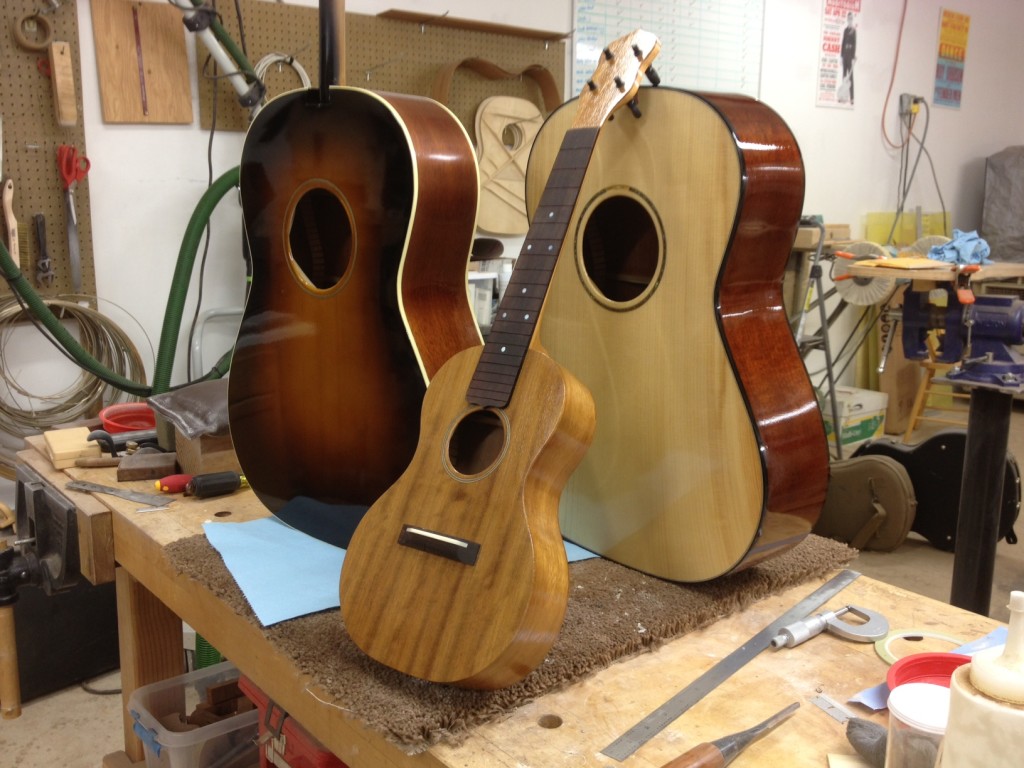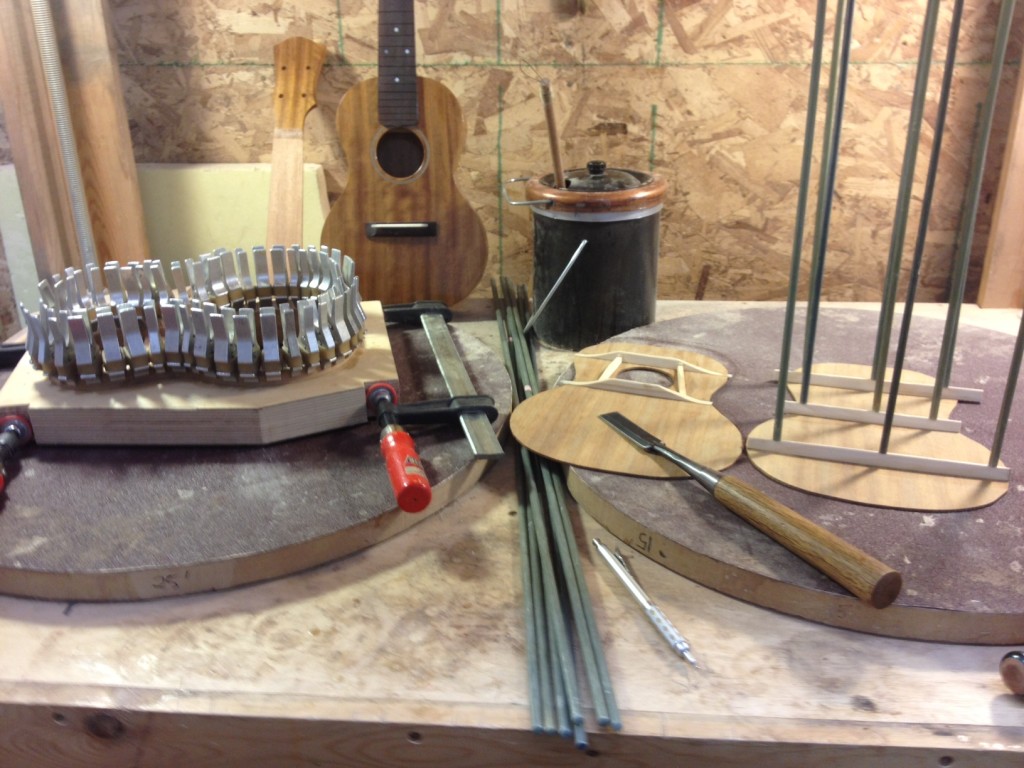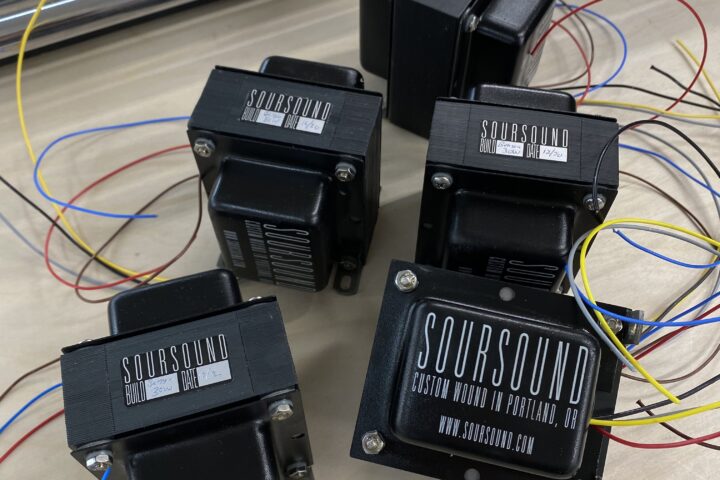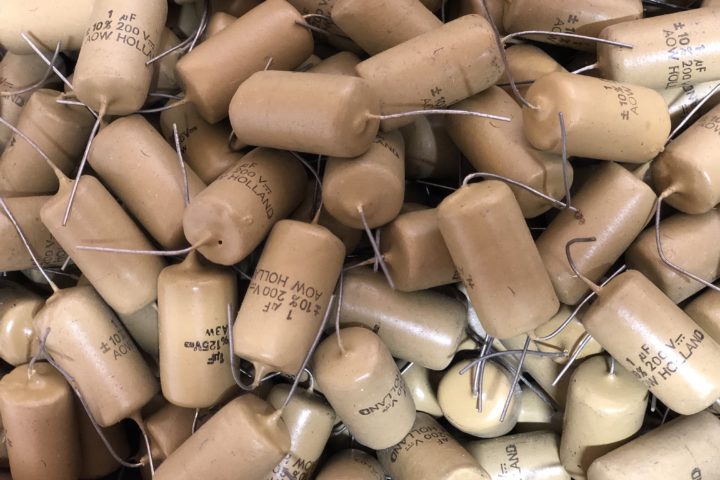As a luthier, Daniel Roberts has been all over the map, literally and figuratively. He started out at a small banjo and mandolin shop (Flatiron), which was acquired by Gibson. Roberts stayed on at Gibson and eventually worked his way up to a plant manager at Gibson’s acoustic factory in Bozeman, Montana. Feeling the need for a change, he took his talents to Santa Cruz Guitar Co., where he fine-tuned his custom work. After 17 years at Santa Cruz, he decided it was time to branch out on his own and started Daniel Roberts Stringworks. We interviewed Roberts at the request of one of our readers… keep the suggestions coming!
Fretboard Journal: What’s on the bench?
Dan Roberts: The way I work is that I generally have about seven or eight guitars that I’m working on. I’ll be working on bending sides and parts, and so on. I built five Buddy Holly guitars last year and I’m doing a new one for them called “Learning the Game.” I’ve got two guitars essentially out of finish: a J-45 and a LG-2.
Then it’s a real fun little side project I’ve got: I just did a concert ukulele. It’s a prototype, but it could turn into a whole bunch more. It’s got kind of an old-time banjo headstock on it and peghead tuners. It’s made out of some wood that came from David Crosby. It was sort of represented – not by David himself, but I think to David – as being koa, but it’s not. I believe it’s black acacia. It’s a really, really gorgeous set. So, I’m just finishing that up.
Then I’m getting ready to start a Larson Brothers guitar. It’s based on one that a friend of mine brought in – one that Patsy Montana had. It’s a 16-inch. [The buyer] got some ebony that his uncle managed to salvage when he was the head carpenter at the Palmer Johnson yacht shipyard. They built the King of Spain a yacht and they accented the inside in this incredible Madagascar ebony.
I’ve got just all kinds of things going.
FJ: No kidding! Tell us more about the ukulele.
DR: It’s a concert size, bigger than a soprano, but smaller than a tenor. It’s a got a 15-inch scale length. The body on it is standard for a concert. It’s about 11 inches long, 8 inches wide at the lower bout, 6 inches at the upper bout.
 FJ: And what’s the story on the wood?
FJ: And what’s the story on the wood?
DR: It’s black acacia, I believe. Like I said, David Crosby got a bunch of wood. I don’t know exactly what his hopes and plans were, but they never came to fruition. So he sold it off. It’s Black acacia top and back, and it’s a matched one-piece top and back.
FJ: So which of all of these projects you described is actually being worked on today?
DR: Well, I was just working on a little LG-2. I was getting ready to fit the neck for it. It has an abalone rosette, black binding and an Adirondack top. It’s a sweet little guitar for a friend of mine. It’s similar to most of my LG-2s – people just want to see that sunburst. I’m kind of excited because she came down and chose some wood that she thought had a lot of character.
FJ: And what are you using for the back and sides?
DR: Really nice mahogany. The way I handle mahogany is, instead of coloring it anymore, I actually oxidize the wood and then just spray over it. So it gets this dark, deep red, but you can still see through it really nicely.
 FJ: How do you oxidize the wood?
FJ: How do you oxidize the wood?
DR: Well, it’s something you have to be a little careful of, because, as you know, if you’re big on health, you’re always taking anti-oxidants, right?
FJ: Right.
DR: So this is a super-oxidant. You mix it with water and just spread it out just like you would normally. Because it’s water-based, it’s going to raise the grain. So I have to go ahead and raise the grain and sand once or twice before I do it.
It takes this kind of pinkish mahogany and makes it a deep, dark red and brown. That’s the color it gets. And you can make it darker or lighter depending on how much you put on and how long you leave it before you seal it. Basically, what you’ll notice is if it’s right under the light, it just glows. But the minute you take it out into a little bit lower light it has that dark look just like an old Gibson, or something.
It refracts fully; I use a shellac to seal it because the vinyl sealer has a huge molecule in it, so it tends to make everything refract at the same level. The minute the light hits it, it’s bright. It just shines, almost refracts right off of it, and it’s really wonderful.



